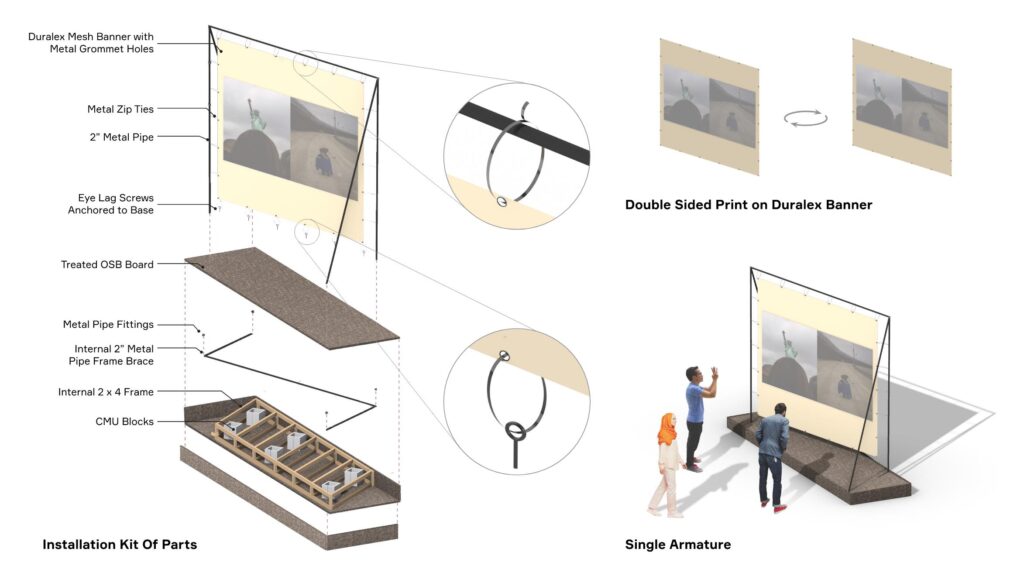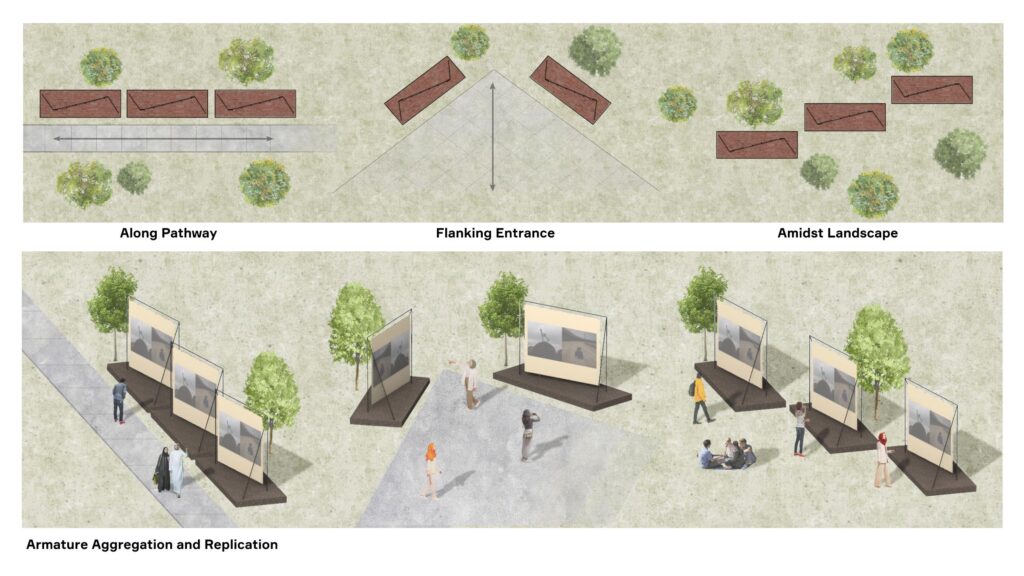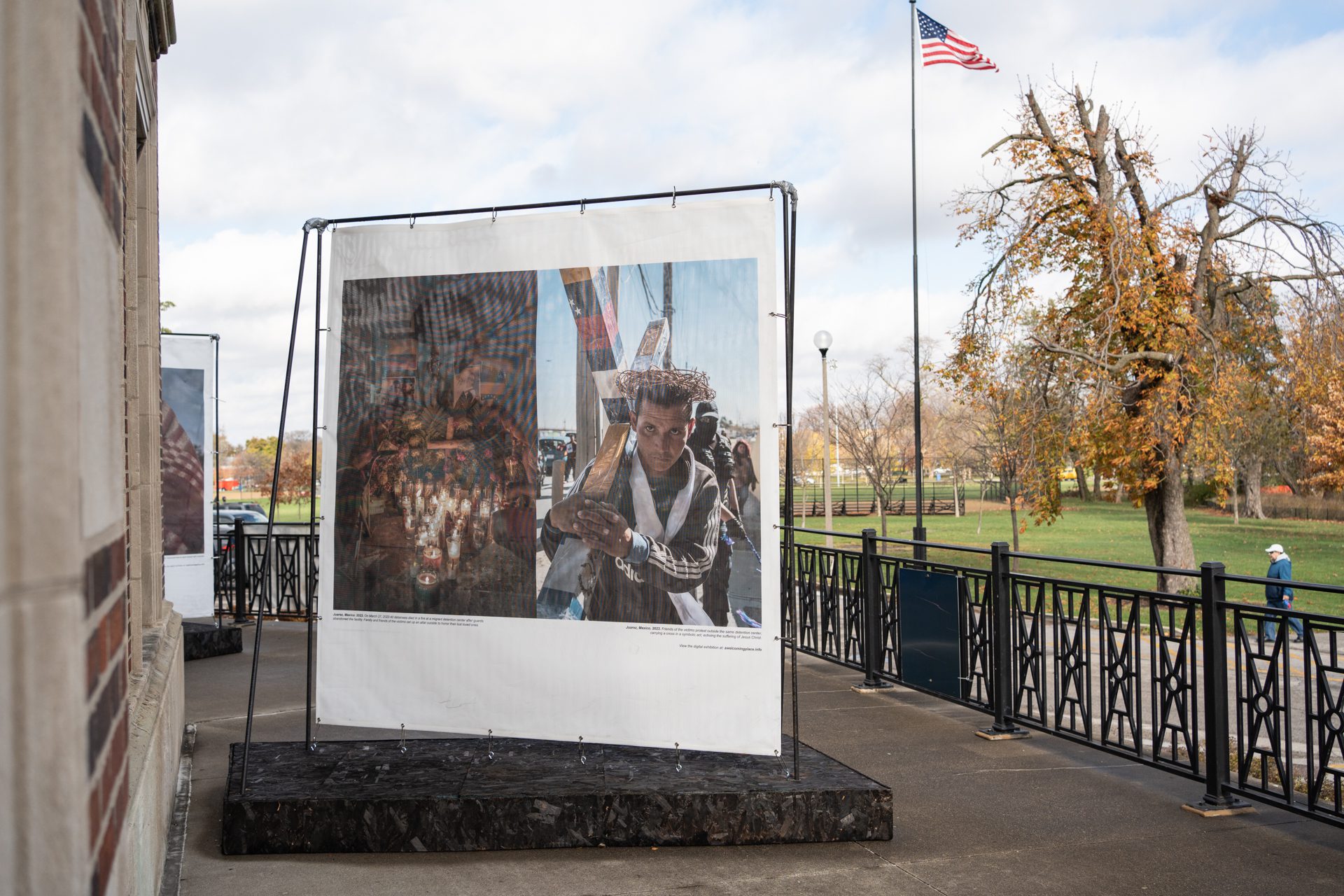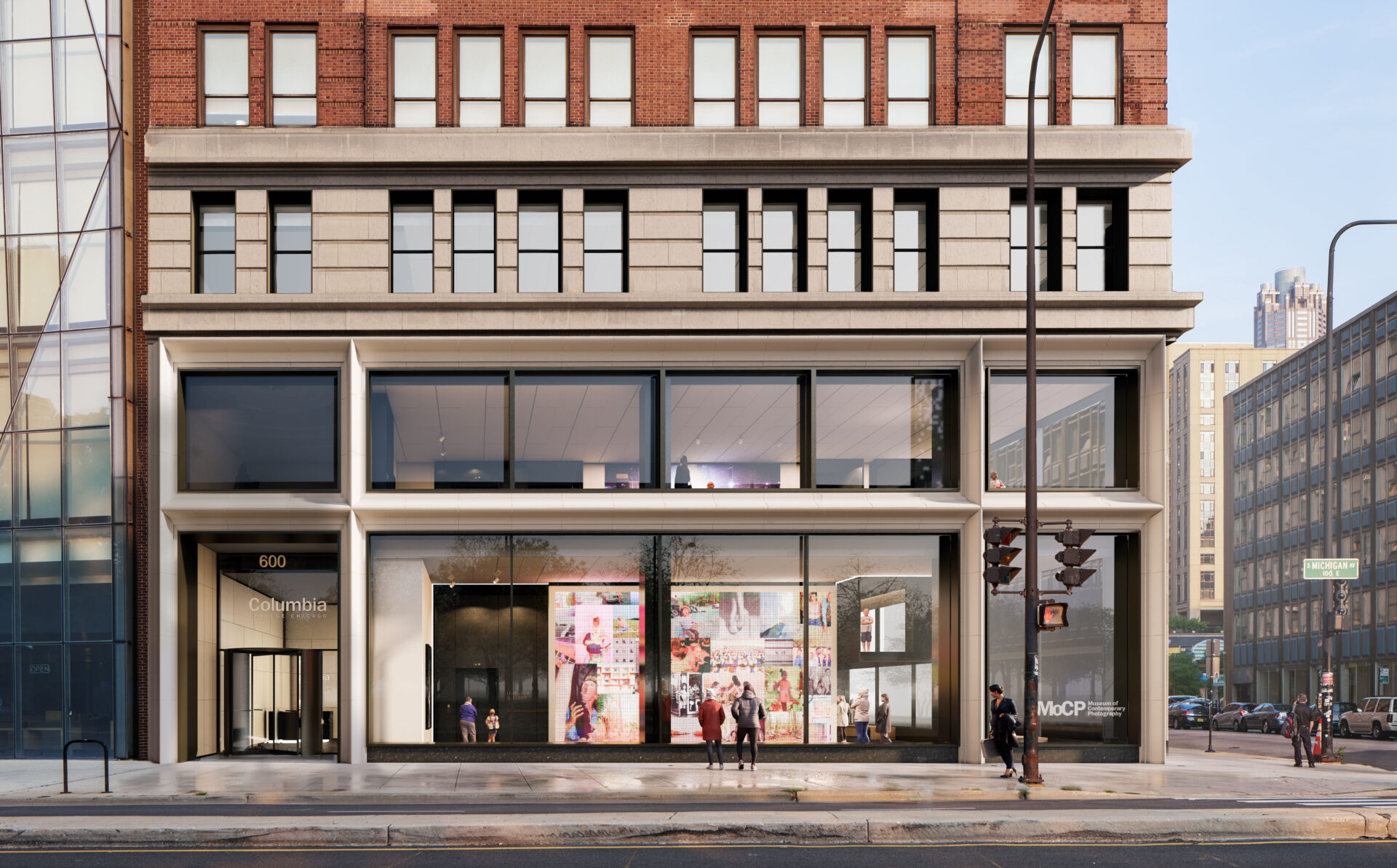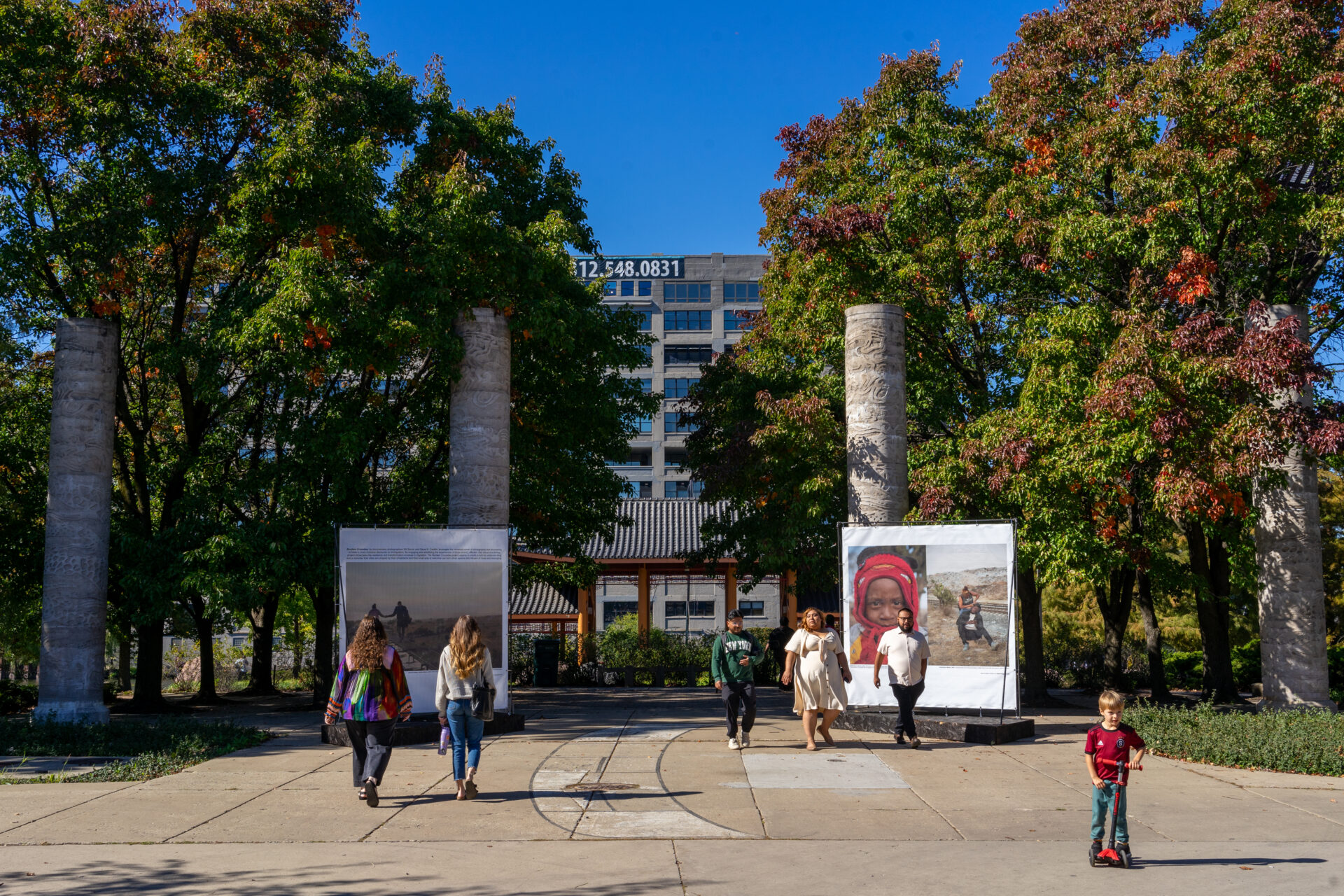
A “Borders Cruzadas: Welcoming Place” was a photographic public installation that visually captures the perilous journey of migration into the United States, photographed by Oscar B. Castillo and Wil Sands, and in collaboration with ArtWorks Projects, a visual arts nonprofit dedicated to advancing social justice and human rights through documentary film and photography. Together, they harness the power of visual narratives to inspire understanding and connection across diverse communities.
For greatest impact to spread these stories and promote empathy and inclusive dialogue on immigration, three factors impacted the design – place, scale, stability. Critical to the narrative was to find places to exhibit these journeys that would both resonate with the neighborhood and have prominent presence to the public. Working alongside the Chicago Park District, three sites were found within public parks, each anchored in immigrant communities that have built resilient cultural hubs of warmth and sanctuary. To further its reception, the documentary photographs were located close to park access points with visibility to pedestrians beyond the park boundaries.
The three chosen parks – Ping Tom Park, Humboldt Park and Marquette Park – have rich histories of cultural preservation and resilience. Ping Tom Park is a cherished landmark, symbolizing Chinatown’s resilience and continued efforts to honor and advance its unique cultural legacy. Humboldt Park serves a legacy of immigrant communities from Norwegian origins that have evolved to Puerto Rican, Mexican and Central American groups and this park ensures these communities continue to thrive and evolve. Situated in Chicago’s Southwest Side with a history as a battleground for civil rights and racial integration, Marquette Park reflects a diverse community, including African American, Latinx, and Arab American populations and provides a space where cultures converge through festivals, public art, and community gatherings.
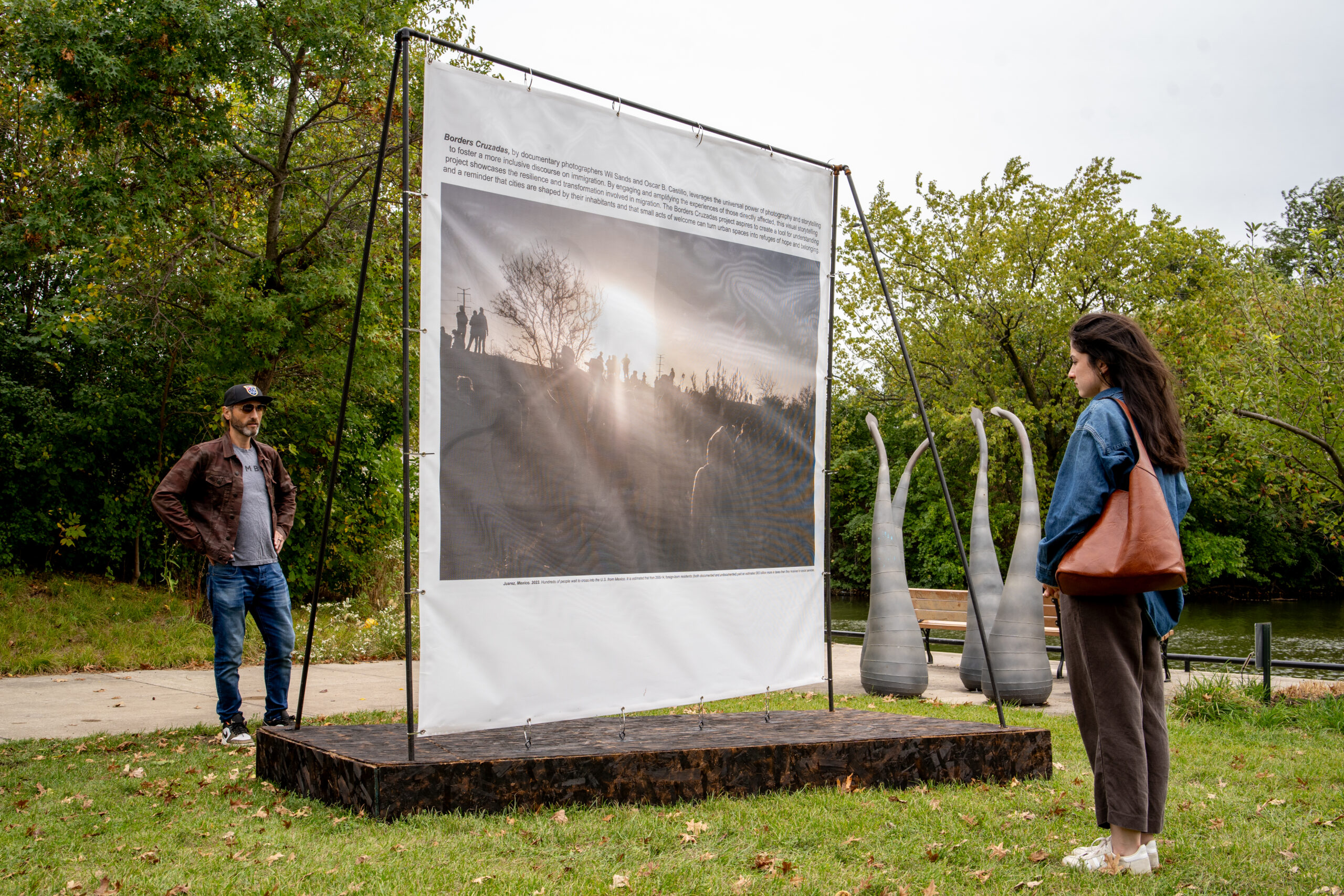
Scale of the installation was also considered to increase impact. The photographs by Oscar and Wil are visceral moments not simply focused on the journey, but rather the individuals, their families, their emotions, their perseverance. This deserved attention at a scale beyond the typical. Each double-sided installation with a main surface measuring 8’ x 8’ featured large scale photographs along with a short narrative of the individual’s journey. The photographs could be seen from afar and experienced up close reaching audiences familiar with the community and those new to the community. In addition, the impact through scale achieved with a design that could be easily replicated and distributed in several locations.
In order to manage the scale and replication, the installation needed to be simple yet durable to handle outdoor elements and public use. With a minimal budget, structural elements were created from scrap material like weighted platform created from left-over OSB and plywood which encased unused bricks. Other inexpensive choices included simple pipes and fitting as a frame for stretching a double-sided printed canvas secured with metal zip ties. While simple in materials, the design team including structural engineers contributed efforts to ensure the armature would resist wind-loads and over-turn due which determined details in the porosity of canvas, connections and weight of ballast. In addition, to considering damage by graffiti and the desire to easily reinstall these in other locations or indoors.
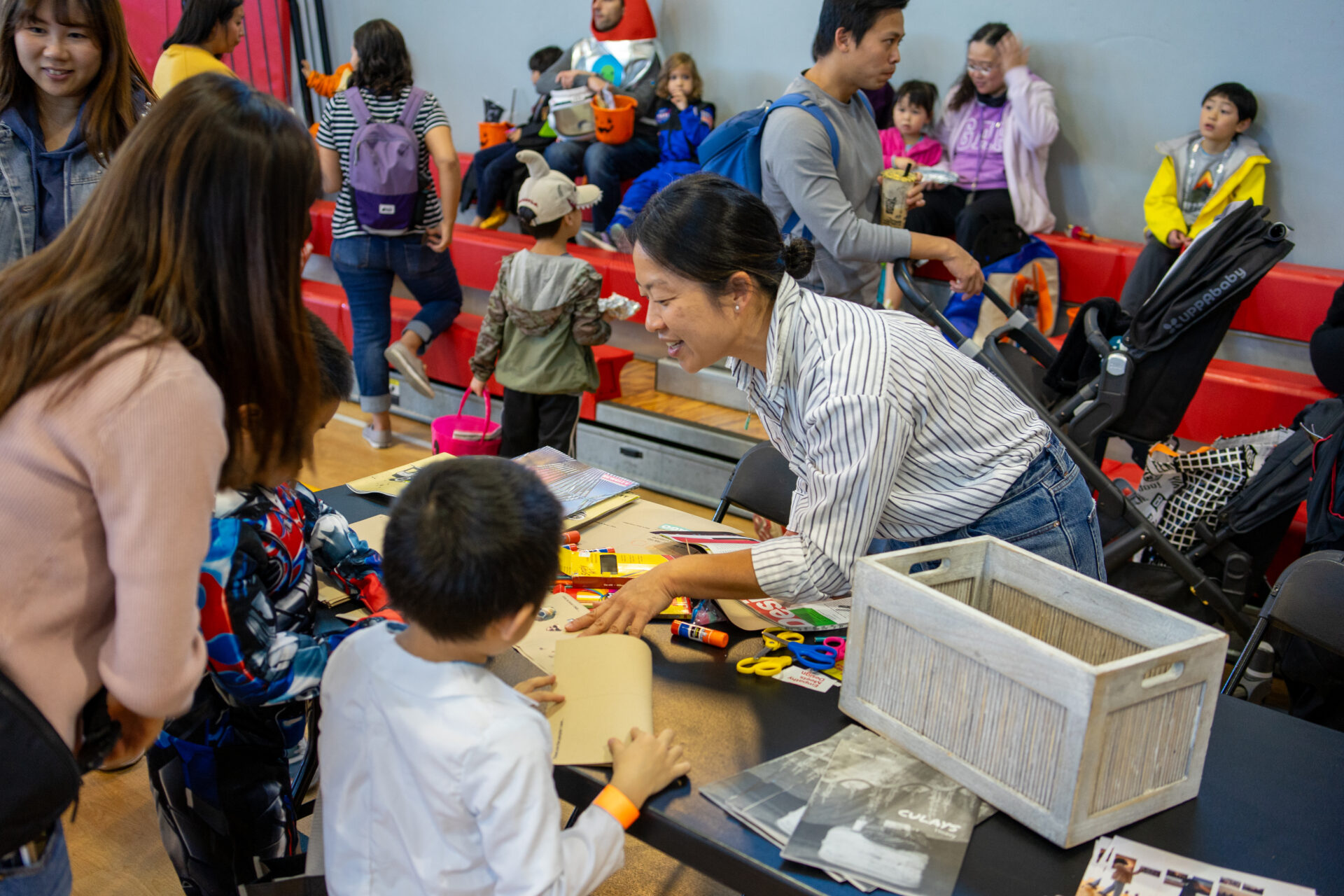
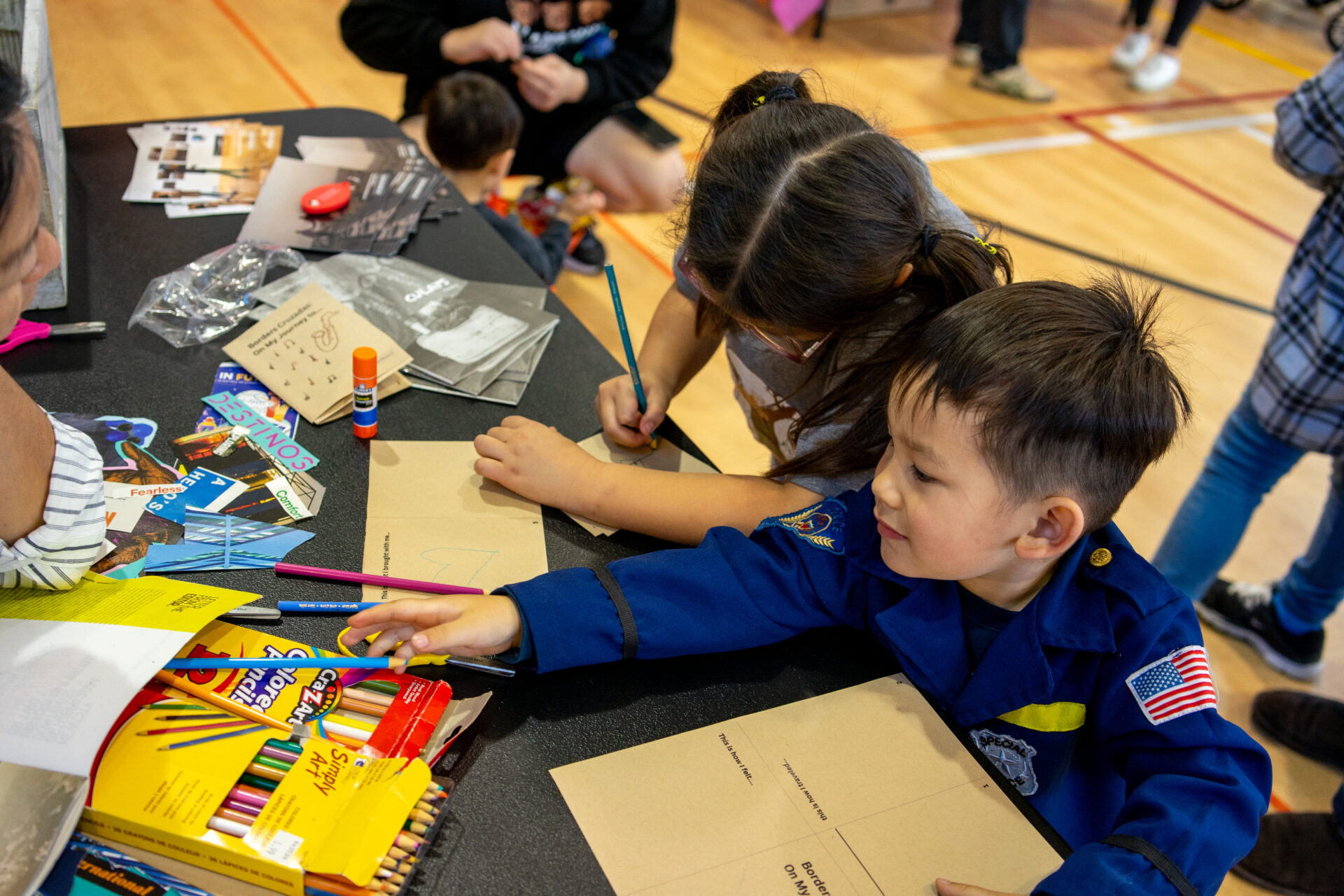
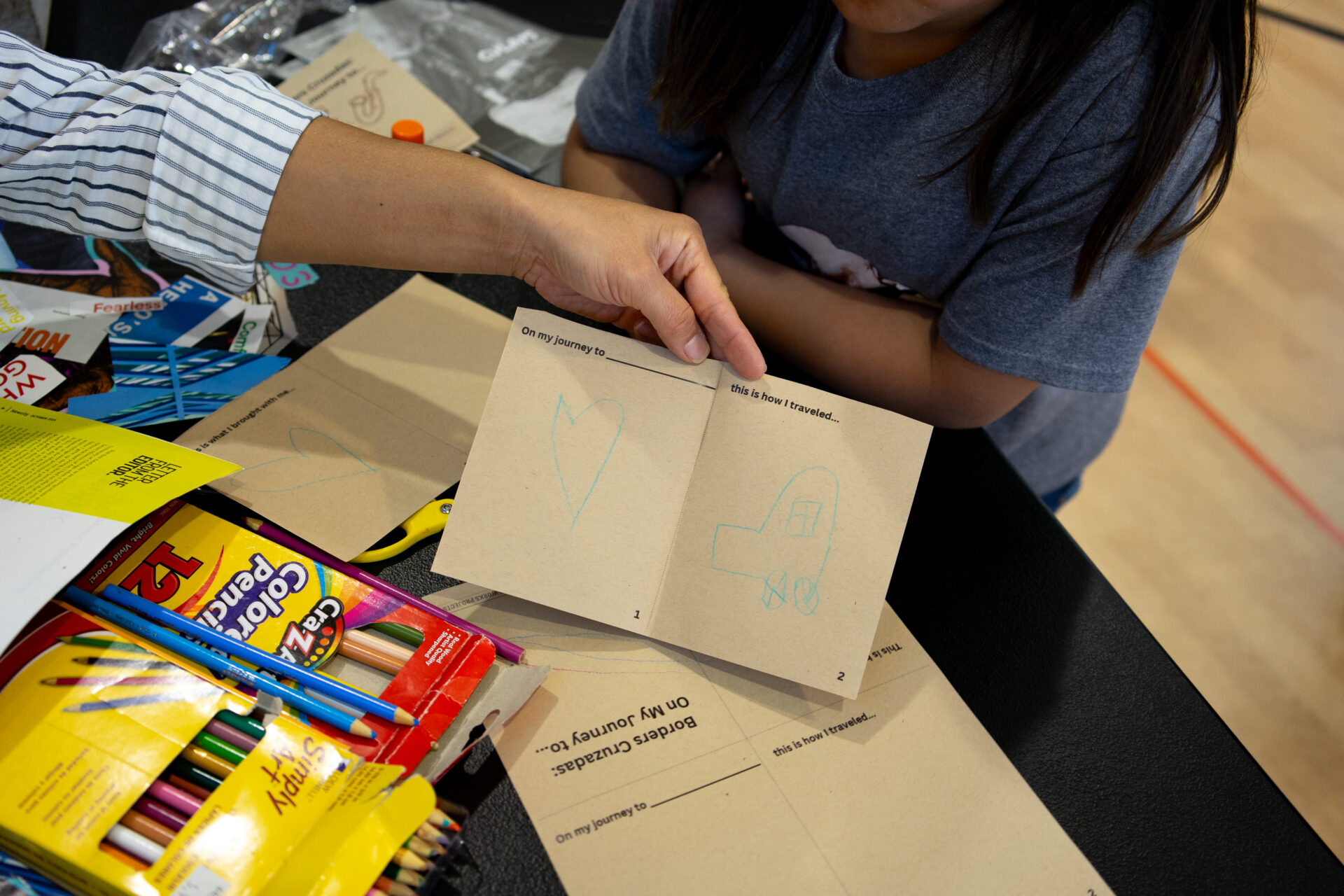
Furthermore, the resonance of this installation was coupled with a series of community engagement events. An onsite program was hosted as a tour of the various park installations where the photographers, AWP and PFP led a conversation with other community organizations assisting migrants in Chicago about issues we are facing locally. And as part of a broader arts engagement campaign with the Chicago Parks District Summer Camp Program, AWP developed a curriculum to deepen engagement with the visual stories depicted in the BordersCruzadas project. During workshops drawing over 250 youth from across 10 Chicago neighborhoods, the images and symbols of belonging, faith and gratitude resonated with participants, mirroring their own personal and physical journeys. These objects highlighted the universal power of faith, connecting us all in the face of uncertainty. While the installations where only exhibited for a temporary period of time, we believe its message of hope and resilience lives beyond the physical presence and reminds us that we are a community that welcomes, not rejects.
